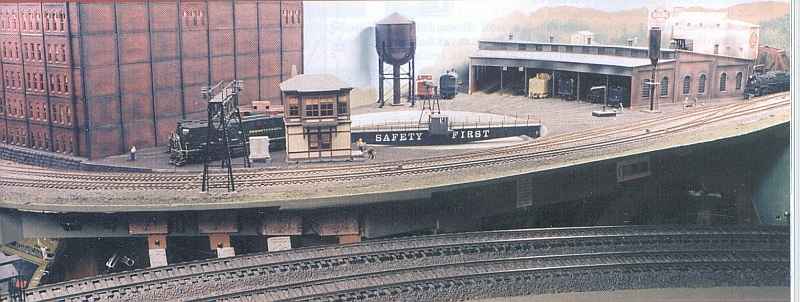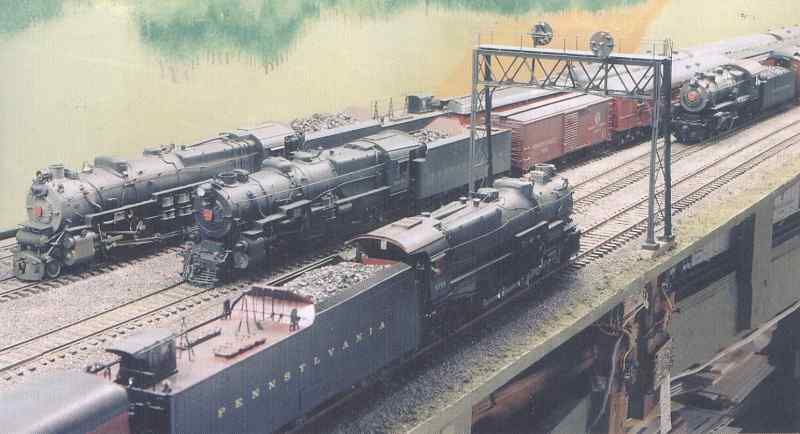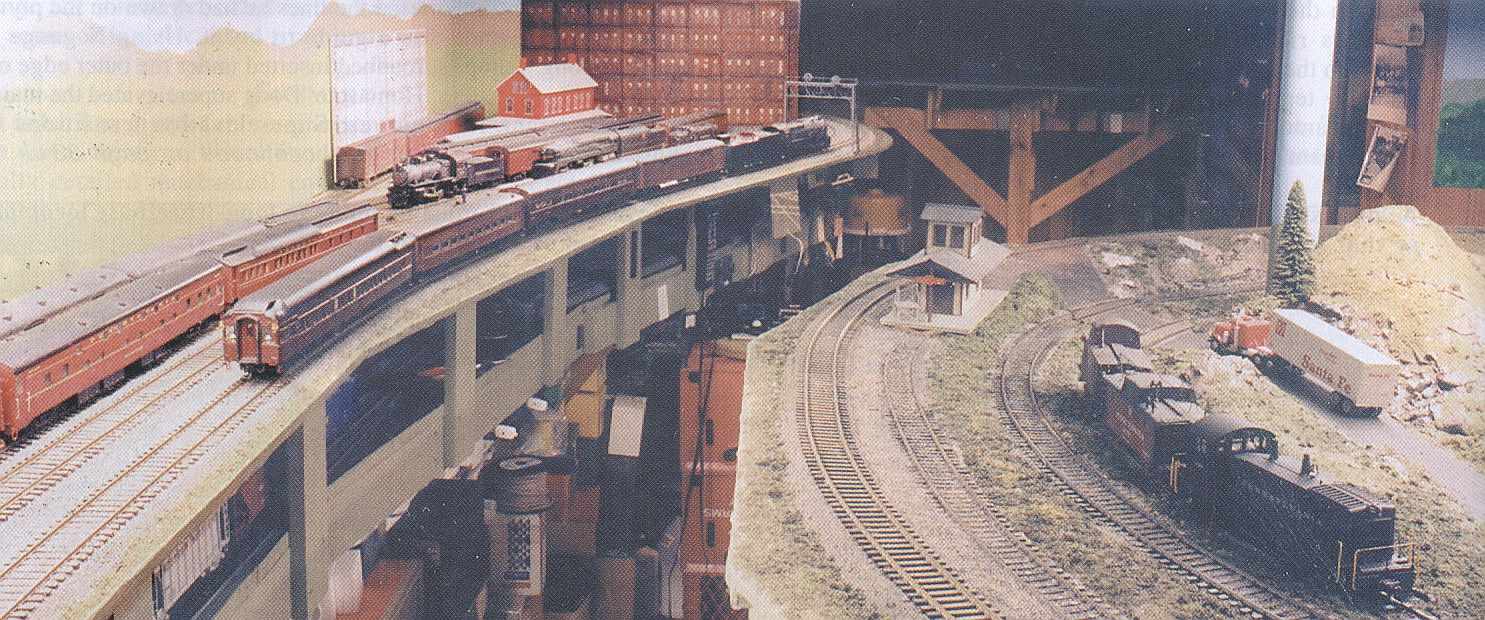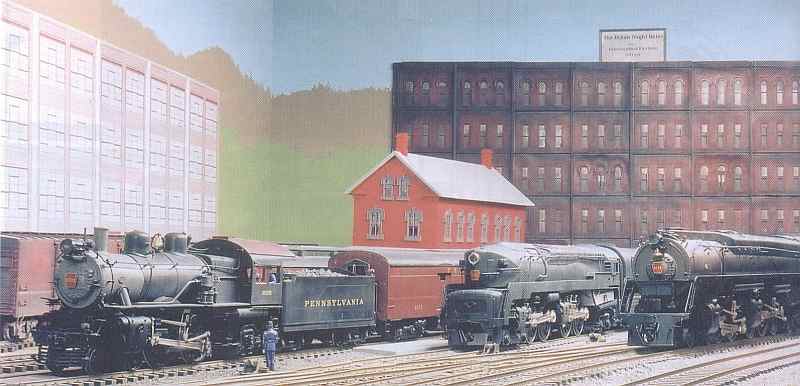Doug
Jones's
Pennsylvania Railroad
February 20, 2005
Construction on the layout began in 1975, with a lower-level, four-track staging yard. Next, Doug and Ted Stepek computed gradients using a string line and a level and then cut the risers for the subroadbed following the grade lines. With a music stand serving as a pivot point, they drew the trackcenter curves on the plywood subroadbed. Homasote roadbed was cut and kerfed in the backyard using a circular saw, and. Doug used the lines he had drawn on the plywood as a guide to lay it. Using N gauge cork roadbed inserted under the outer edge of the Homasote, Doug superelevated the mainline curves. Superelevation transitions were made using shirt cardboard.
The track is a mix of the old Atlas flex track with Code 148 rail on the main line and Code 125 in the yards. It was painted and weathered, and simulated joint bars with bolt head detail were used to represent jointed rail connections. Except for two double slip switches by Old Pullman Model Railroads, Inc., in the passenger yard, Doug handlaid the turnouts in place to fit into the available space.
One of the highlights of Doug's layout is his engine terminal. Doug started with a Bowser 28" diameter turntable pit and scratchbuilt the bridge, gantry, and control house from scaled photos of Pennsy turntables. It took him six months to complete the project. The turntable is powered by a small Variac-controlled motor with a toothed-belt drive on the center shaft. Doug placed a mirror on the ceiling so he can easily check the track alignment. Then, he added a six-stall Korber roundhouse and five additional storage tracks for diesels and maintenance-of-way equipment.
Doug recently started on scenery with the help of Chris Smith. They started by adding painted backdrops and valances which provided great depth to the scenes along the narrow sections of the layout. They also have been using the hard shell approach for the land forms using Hydrocal. They have made rock molds and cast the rock faces. The surfaces are then colored with Liquitex acrylic earth colors. He is now working with his second 100-pound bag of Hydrocal.
As the layout continues to grow, Doug is now working on a mining scene that will add to the Pennsylvania atmosphere. It is on a hill overlooking the double-track loop on the east end of the layout. The Capital Area O Scalers are following the construction with a great deal of interest, and they feel that the addition of scenery has certainly helped the railroad come alive.
The Pennsy feel is significantly enhanced with the use of Pennsylvania Railroad position light signals. Doug wired the block signals to track occupancy circuits making them prototypically functional. But, the block signals are not just scenery devices; they are especially important since Doug uses North Coast Engineering's Digital Command Control (DCC) for train control. Three mainline trains can run simultaneously, but crews have to pay attention to the signals.
A giant step in realism has come from Doug's recent addition of sound to his motive power. He uses Soundtraxx DSD decoders to add the sound, and he feels that the effect is most impressive.
Doug has won modeling contests at the Pennsylvania Railroad Technical and Historical Society with locomotives such as his scratchbuilt E5s, 4-4-2. He also modifies commercial models to more closely follow the prototype as well as allow large locomotives such as T1's and Q2's to sail around his 50" curves.
 |
 |
 |
 |